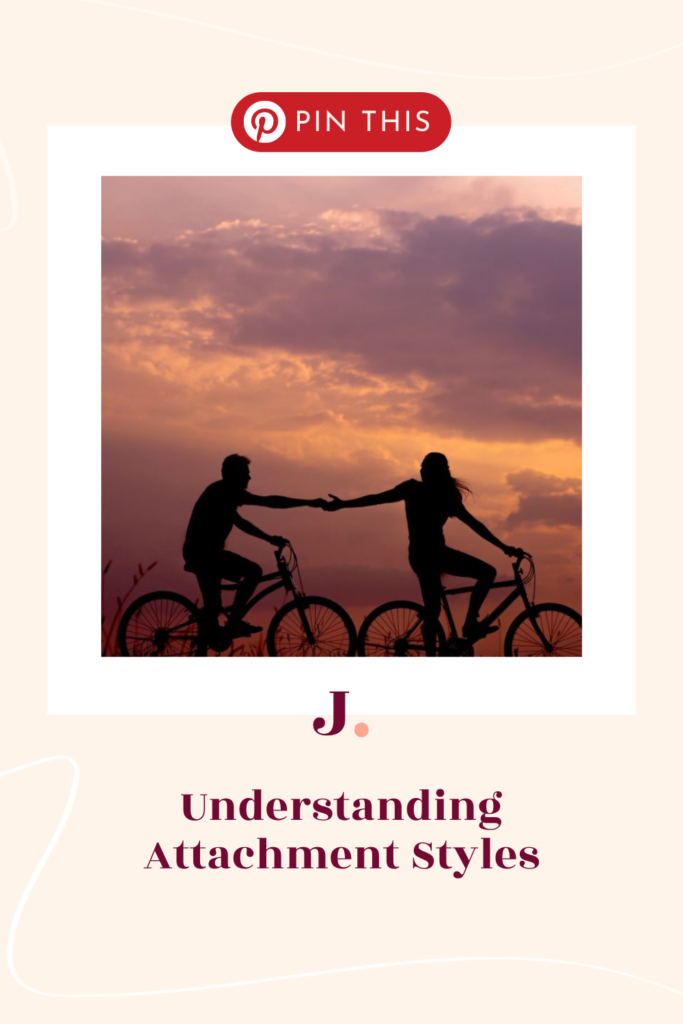listen now!
Check out my latest podcast interviews where I cover a range of topics around dating, attraction & relatioships!
Prefer to listen than to read?
Blog Categories
other
relationships
attraction
dating
START
Understanding your primary dating archetype takes you closer to truly understanding the dynamics of attraction, improving your relationship skills, and expanding your opportunities to find a great partner!
Take the quiz: Uncover your Dating Blind Spots!
Hey, I'm Jiveny Blair-West an Australian Dating, Attraction & Relationship Coach. Want to navigate the modern dating scene with more clarity and insight? Then stick around, explore or click here to learn about working with me.
Understanding Attachment Styles
Filed under:

Why do some people tend to be more aloof and unattached in their relationships, while others are more codependent and need more reassurance?
Attachment theory, studied since 1958, explains how different people have different relating styles. Understanding our own default style can help to explain many of the patterns and challenges you may face when dating and forming new relationships.
Let’s take a look at the three main attachment styles, how they’re formed in childhood, and how we can develop a more secure attachment style.
Where does your attachment style come from?
Psychologists explain that this process starts in early childhood as you are dependent on a caregiver for all your physical and emotional needs.
If the relationship is reliable and kind, a child is more likely to develop into a secure adult. If the caregiver is erratic or unable to meet the child’s needs, a child may be indifferent to their attachment figure (avoidant), or they will desperately attempt to reestablish contact with their caregiver with attention-seeking behaviours like crying or screaming (anxious).
In romantic relationships, the attachment styles transfer from caretaker to partner.
Keep in mind, your attachment style doesn’t explain everything about your relationships. It’s also important to recognise that our attachment style can change throughout our lives and childhood is not the only factor that comes into play. Sometimes the person we are dating can bring out a different attachment style than what is our norm. This is why I like to say one might have anxious or avoidant “tendencies” rather than it being a default setting.
What are the different attachment styles and how are they developed in our childhood?
There are three main attachment styles:
- Anxious (or Ambivalent) – these children learnt to expect their carers to be variably available such that they were more fearful of abandonment and would look for reassurance making them the most ‘clingy’;
- Avoidant – these children had effectively given up on being cared for and became overly self-reliant. They saw relationships as less important and felt safer keeping an emotional distance from others.
- Secure – these children learnt to expect their carers to be there for them for emotional and physical support and they came to believe that this was because they were worthy of love and respect;
Understanding The Anxious Attachment Style
People with an anxious attachment style tend to be the pursuers in relationships, often working to move things forward and facilitate closeness prematurely. They regularly seek reassurance from their partner and can become anxious when there is uncertainty in the relationship.
Something people with anxious tendencies need to be aware of is what is called ‘protest behaviour’ e.g. trying to make their partner feel jealous when they feel insecure or intentionally withdrawing/making themselves unavailable to prove a point.
Social media can prove to be a trigger for those with anxious attachment, as one study has shown that people with anxious attachment styles are likely to post more often about their relationship online. While someone who is secure does not feel much need for social reassurance, allowing them to be more present in the moment with their partner.
Unfortunately people with anxious tendencies are often most drawn to people with avoidant tendencies because of the polarity that exists between them. This often results in each person amplifying their partner’s fears and insecurities and can make for a very challenging relationship.
It also tends to leave both anxious and avoidant people feeling that relationships are “meant to be hard” and that if they don’t experience those intense highs/lows, there’s not ‘enough’ chemistry or passion in the relationship. This can lead those with insecure attachment styles to view secure people as ‘boring’ yet dating a secure partner can often lead to higher relationship satisfaction in the long run.
Understanding The Avoidant Attachment Style
People with avoidant tendencies want intimacy too, but the difference is, they’re also scared of it. Often they have grown to associate closeness in relationships with a loss of autonomy which causes them to withdraw as the relationship becomes more intimate, irrespective of how well their partner treats them.
At first, they might actively pursue a relationship but then once the potential of a relationship starts to become real, they withdraw. This is why avoidant people often give mixed messages, because they are trying to navigate the inner conflicts they have around closeness and intimacy. This can be very confusing for their partner when the relationship is actually going well.
At other times, avoidant people might actively pursue relationships that are unlikely to go anywhere, for example by engaging in an affair, pursuing people who are unavailable or throwing themselves into a holiday fling.
Engaging in relationships with no future like this often allows people with avoidant tendencies to feel safer in bringing their full self to a relationship. But if their partner was to leave their marriage or a holiday fling were to potentially become something more serious, their avoidant attachment style is likely to get triggered.
Something avoidants need to be aware of is their own ‘distancing strategies’ (therapy is often needed for this) which they often unconsciously employ to keep people engaged but at arm’s length in relationships.
Understanding The Secure Attachment Style
Secure people enjoy closeness and intimacy and are able to build relationships within the context of healthy boundaries. They are empathetic and good communicators with the ability to manage their impulses and feelings.
In relationships, they tend to be quite emotionally stable and are able to roll with the punches. Furthermore, secure people are less likely to take things personally. They are often good at maintaining close, long-term friendships and tend to have good relationships with their immediate family and wider community.
The good news is roughly 50% of the population is said to be secure and dating a secure partner can help anxious/avoidants to develop a more secure style of relating as they lead with their example.
Applying this knowledge to dating:
It is useful to learn to identify people’s attachment styles early on in the dating process, however this takes time and you will probably not be able to accurately evaluate this on the first or even third date!
For example, sometimes a potential partner might seem to be secure on the first couple of dates but it is not until you show more interest that their avoidant attachment style gets triggered.
That aside, some signs to look for could be:
- How do they describe their friendships?
If someone you’re dating describes having many ‘friends’ but not really any close or long-term friends, they are likely to be insecure (anxious or avoidant), while someone who has close and healthy relationships with their friends and family is more likely to be secure.
- How comfortable are they talking about their feelings?
People with avoidant attachment styles tend to be less comfortable talking about their feelings and instead focus on more superficial topics of conversation without getting too personal. By contrast, a secure person is likely to be more relaxed about opening up.
- How do they communicate between dates (after the first date)?
An anxiously attached person might start texting or calling you regularly to check-in and connect, almost as if they assume you’re already in a relationship. In contrast, an avoidant person is more likely to leave lots of space between communication, be non-committal to planning another date and keep things a bit open-ended.
When all is said and done, attachment styles run a full spectrum, and it might take several dates before someone’s attachment style really becomes clear.
The good news is, those with anxious or avoidant styles can work on developing a more secure attachment.
How? Firstly, by acknowledging and understanding where one’s tendencies lie. For example, if you have an anxious attachment style, recognise when you fall into the trap of playing out protest behaviour and consciously work to try things differently.
Or if you are avoidant, notice how you keep people at arm’s length. You need to muster the courage to allow yourself to get closer to potential partners.
Ultimately, dating a more secure person can help someone with anxious or avoidant tendencies to develop a more secure attachment style as they learn they do not have to resort to protest behaviour or distancing strategies to feel safe in a relationship.
For a more in-depth exploration of attachment styles, I often recommend my clients read Attached by Dr Amir Levine and Rache S.F. Heller, MA

Explore Programs
Since 2016 I’ve been working with singles aged 20-70, helping them to re-claim their personal power, date well, create a meaningful, lasting relationship and find more joy in their everyday life. If that's the kind of support you are looking for, it would be my pleasure to help you do the same!
An online dating, relationship, and personal empowerment coach here to help you step into your power and build meaningful relationships in all areas of your life.
Hi, I'm Jiveny Blair-West,
QUIZ FOR MEN
QUIZ FOR WoMEN
Uncover the energy you lead with in love - and what might be holding you back. Take the quiz to reveal your strengths, blindspots, and next steps toward relationship mastery.
This is a bold, no-fluff tool to help you decode your relationship style and start playing the game of love on a whole new level!
Discover Your Dominant Relationship Archetype
Ok, I'm in!
Get my best tips for creating a charismatic online dating profile that stops the swipe and makes a captivating first impression!
Download my free guide to maximising your online dating profile
What next?
Take the quiz!
Uncover Your Dating Blind Spots:
Uncover Your Dating Blind Spots: